The Seven Best Films About Close Encounters
What happens when average joe meets E.T.?
Tomorrow sees the arrival of Dark Skies in theaters, the latest from writer/director Scott Stewart (Legion, Priest). The film has Keri Russell and Josh Hamilton as a suburban couple who find their lives spiraling into chaos after a mysterious force takes an interest interest in their family, and not the good, “we made you brownies” kind of interest. No, the trailers suggest that the poor Barrett family has landed square on the to-do list of some malevolent extraterrestrials who think they’re prime candidates for a little abduction, a dash of missing time, possibly even a little old-fashioned anal probing.
We’ll have to wait until tomorrow to learn if Dark Skies is any good (check back for our review), but its impending arrival got us thinking about the movie’s place in a larger sub-genre. Namely, stories where average, ordinary people come face-to-face with visitors from outer space. Some are malevolent, some are friendly, some are downright adorable. But each and every one of them changes the lives of the humans they contact, for good or ill.
Here are our picks for the very best movies about close encounters between average janes/joes and strange visitors from another world.
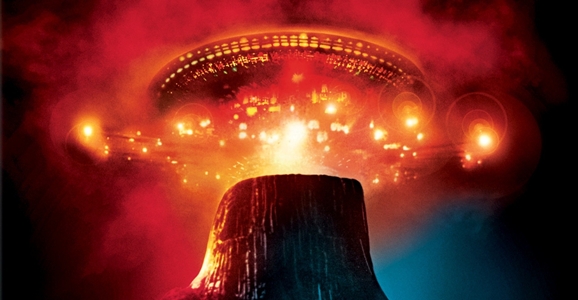 Close Encounters of the Third Kind (1977)
Close Encounters of the Third Kind (1977)
We’re going alphabetically for this list, but this one pretty much had to be at the top. Spielberg’s Close Encounters, aside from being a certified science fiction classic, is the bar by which all other similar movies are measured. Hell, it even gave us the title of this article. As with all the films on this list, it works largely by grounding the story in the life of an average, ordinary person, suddenly in the midst of extraordinary circumstances. Spielberg also makes a bold choice by making his lead character, Roy Neary (Richard Dreyfuss) often unsympathetic, often crossing the line into downright unlikable, in his unwavering search for the truth about his UFO encounter. It would have been easy to make his family supportive of his crazy quest, but it’s a lot more realistic when they just assume he’s gone batty.
Close Encounters is positively chockablock with unforgettable iconic visuals. A squadron of planes discovered in the Sonoran Desert, 30 years after they vanished without a trace. Roy Neary chasing a group of UFOS, half his face burned red as they pass above him. The colossal mothership cresting the top of Devil’s Tower. And the music. Those five notes were a brilliant touch, because they serve as a logical approach to how you could communicate with beings who don’t speak any Earth languages, and they serve as the basis for the film’s most unforgettable sequence. Just remember to stay away from any glass, because the alien DJ in the mothership might crank that stuff up to 11.
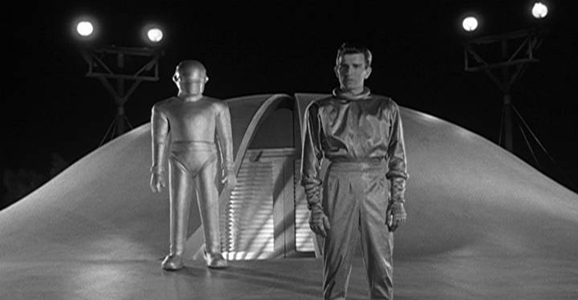 The Day the Earth Stood Still (1951)
The Day the Earth Stood Still (1951)
When mankind crosses the path of extraterrestrials, Hollywood often assigns the aliens less-than-benevolent motives. After all, we love a good underdog story, and what could be more underdog than humans vs. a far more advanced invading species? From War of the Worlds to Independence Day to last summer’s best-forgotten Battleship, humanity has gone to war in defense of our home world countless times on the big screen. The invading aliens of The Day the Earth Stood Still are considerably less bombastic, but no less deadly. The implacable robot Gort spends most of the movie merely standing motionless, but when he is stirred to action, he leaves little doubt that all our assembled military might is less of a threat to him than a mosquito in a flyswatter convention.
The real heart of the movie, however, is in Klaatu, the humanoid alien who has been sent as an ambassador to our people. But he most definitely does not come in peace. Instead, he’s come to warn us that we have been noticed by the larger galactic community, and if we don’t put away our childish toys and learn to live together, we may very well be wiped out before we advance enough to become more than an annoyance to our interstellar neighbors. Michael Rennie’s Klaatu is an alien in the vein of the Doctor, a visitor who sees the potential in us as a species, and his relationship with the residents of a boarding house where he hides undercover serve as the emotional spine of the story.
 E.T. the Extra-Terrestrial (1982)
E.T. the Extra-Terrestrial (1982)
It’s interesting that two of Spielberg’s earliest and most well-known films both involve encounters between regular people and extraterrestrial visitors, and I definitely think it’s no coincidence that several of the movies on this list are targeted at both adults and kids. While Close Encounters of the Third Kind is the definitive grown-up version of this tale, E.T. tackles the same material with a childlike sense of wonder. Getting to meet and hang out with an alien is the dream of many a young kid, and E.T. both capitalizes on, and helped fuel, those fantasies.
E.T. also exemplified one of the best qualities of kids’ movies in the ‘80s: it didn’t shy away from putting the young protagonists in real danger. Well, at least it did before Spielberg lost his mind and digitally replaced the firearms in the hands of government agents hunting E.T. with walkie talkies. Thankfully, he’s since realized just how horrible and unnecessary that change was, so Spielberg at least wins points for being more rational than his buddy, George Lucas. Still, even with the asinine temporary changes, E.T. is a great story of friendship between two beings literally from different worlds, and it invites even us cynical grown-ups to give ourselves over to the story and regress to a time when we dreamed that we really might find an alien in our backyard someday.
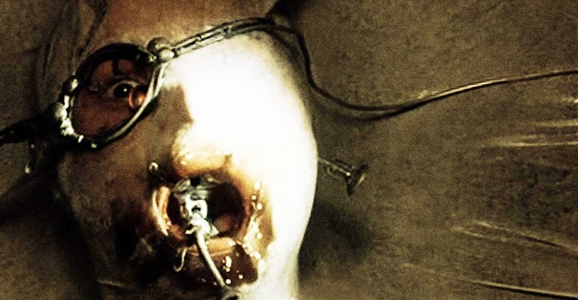 Fire in the Sky (1993)
Fire in the Sky (1993)
Of all the movies on this list, Fire in the Sky is the one that best exemplifies the “alien abduction” mythology that took root in our culture during the last century. All the elements are there: the close encounter with an extraterrestrial craft, the abduction, the experiments, the “Greys.” Allegedly based on real events, Fire in the Sky has a logger named Travis Walton (D.B. Sweeney) abducted right before the eyes of his coworkers. When they get back to town and tell the cops what happened, the police are understandably skeptical and suspect they murdered Travis and are trying to cover it up.
Aside from the actual abduction and a climactic sequence where we see Travis’ experiences, Fire in the Sky is less about an alien abduction, and more about the plight faced by the ones who were left behind, who are desperate to be believed but instead wind up vilified by the entire town. The cast, including Robert Partrick and Henry Thomas, sell those emotional stakes well. Eventually Travis is returned, naked and shell-shocked, and one of the film’s most effective sequences begins as we finally see Travis’ experiences aboard the alien craft. He awakens inside a slimy cocoon and then fumbles around the ship’s interior in zero gravity. The sequence is genuinely frightening, culminating in a nightmarish scene where Travis is shrink-wrapped to an operating table as a needle-like probe lowers into his eyeball. It’s worth a watch, and it’s streamable from Netflix.
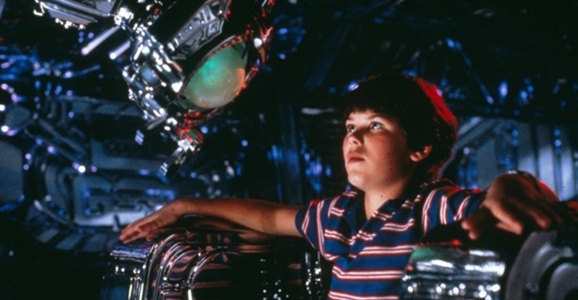 Flight of the Navigator (1986)
Flight of the Navigator (1986)
Flight of the Navigator appeals to the same adolescent dream of befriending an alien, but adds in the bonus of having that alien be a badass, wisecracking starship that takes you away to cruise around the galaxy. And if the movie focused on that element, it could have been a fun little adventure, but folks of my generation probably wouldn’t remember it as fondly as we do. Instead, Navigator takes a more disturbing angle of skipping over all the space adventures and instead focusing on the cost of them: namely, having young David Freeman (Joey Cramer) returned to Earth eight years after he left, but without having aged a day.
The thought of losing your family is a universal fear for every young child, and Navigator capitalizes on that fear by having David’s family literally moving on without him. As with E.T., Navigator has its young protagonist squaring off against grown-ups who are more interested in his value as a scientific commodity than as a person, and that’s a deeply unnatural and frightening thought for any young kid. These elements give the film an edge that allows it to appeal to grups as well. Generally, the thought of a Flight of the Navigator would be worthy only of a disinterested sigh, but the fact that it’s in the hands of Safety Not Guaranteed director Colin Trevorrow has earned my attention. I’m intrigued to see what sort of spin he puts on the core concept.
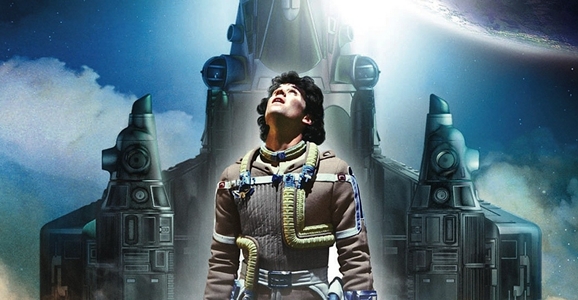 The Last Starfighter (1984)
The Last Starfighter (1984)
Once again, we’ve got a kids movie about a normal person crossing paths with extraterrestrials. Apparently the ‘80s were a golden age for this sort of thing. And while the protagonist, Alex (Lance Guest), is a few years older than the protagonists of E.T. and Flight of the Navigator, The Last Starfighter combines and builds on the wish fulfillment of those movies. You’ve got E.T.’s influence in the form of some friendly alien buddies. You’ve got Navigator’s kickass space ride. But Navigator takes things a step further. Rather than just getting a ride on a spaceship, Alex is strapped into the cockpit of a starfighter and tasked with saving the friggin’ galaxy, all thanks to his skills honed by playing the same video game over and over and over again. If that’s not a kid’s dream come true, I don’t know what is.
The Last Starfighter’s CGI graphics may not hold up as well these days, but they were mind-blowing at the time, and if you can forgive the Commodore 64 graphics, the movie still has some great moments. Like many so-called “kids’ movies” from the ‘80s, it also has a darker, more frightening streak that gives it a nice edge. The scene where Alex’s replacement android duplicate is revealed in the midst of assuming his form scared the crap out of my six-year-old self, but not enough to keep me from watching the movie countless times. Even though I may have been watching it through my fingers part of the time.
 Signs (2002)
Signs (2002)
Hear me out. Signs has earned a bad rap for two reasons: 1) it hinges on a ludicrous third-act twist so nonsensical that it destabilizes everything that came before it, and 2) it signaled the first warning signs (ahem) that M. Night Shyamalan wasn’t going to live up to the myth he’d constructed around himself. And while Signs is Pulitzer-worthy compared to the likes of The Village, Lady in the Water or The Happening, those closing moments have earned the movie a much worse rap than it deserves.
To be sure, that ending is a whopper, but the rest of the film demonstrates the masterful use of suspense and slow-burn tension that first earned Shymalan the reputation he has since squandered. Shyamalan takes his time revealing the menace at the core of the movie, teasing us with figures atop barns and half-glimpsed horrors in a corn field, and the eventual reveal of the creatures is that much more effective for that build-up. Signs is four-fifths of a good movie undone by the remainder, but those four-fifths are still quite good. [Plus, Signs becomes a whole other, much superior movie if you interpret the creatures not as extraterrestrials, but as demonic entities testing Rev. Graham Hess’ (Mel Gibson) faith. Click here for more on that rather brilliant fan theory.]
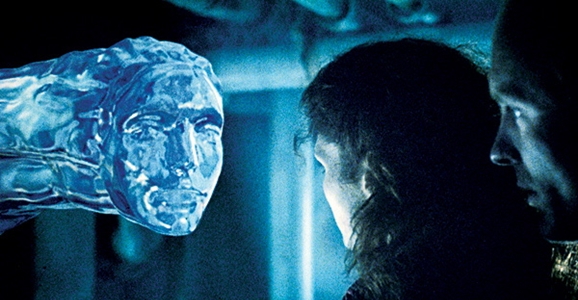 Honorable Mention: The Abyss (1989)
Honorable Mention: The Abyss (1989)
I very nearly included The Abyss in the body of this list, not least because it’s one of my favorite movies of all time. But while The Abyss definitely fits our theme of the day — average people confronted with the extraordinary — it doesn’t necessarily fit the “extraterrestrial” part of our mission statement. While the creatures Bud Brigman (Ed Harris) encounters at the bottom of an abyssal trench may well have emigrated to our world from somewhere else, it’s just as possible that they’re natives who evolved along a very different path from us, isolated in a place we were never expected to visit. Either way, The Abyss is propulsive, packed with wonder, and relentlessly entertaining, and it also includes one of the most viscerally terrifying scenes ever put to film. (Anyone with a phobia about drowning might not survive this movie.) The fact that it isn’t available in a high-def format is a crime against humanity. Hey, James Cameron, set the Avatar sequels down for a minute and knock out this Blu-ray, would ya?












